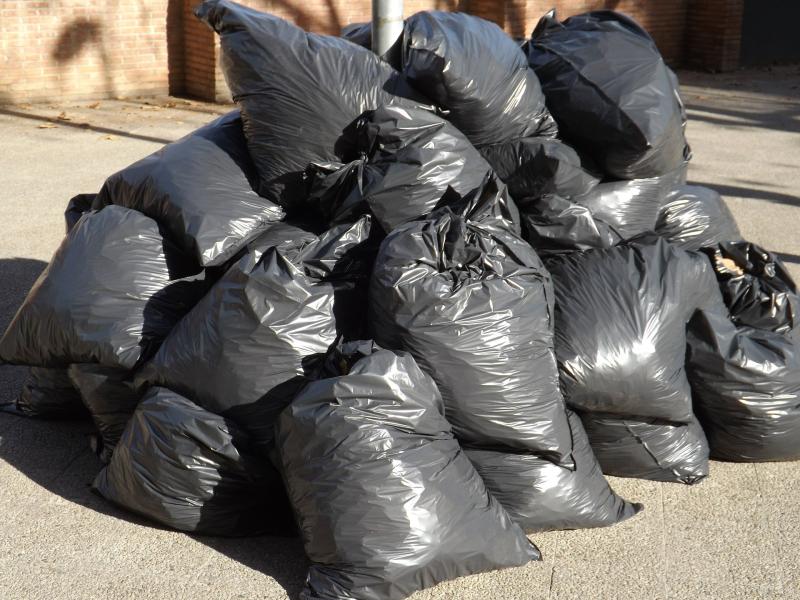
The ground is still covered with leaves in many neighborhoods, but don’t throw them away - put them to work for you. Even if you only have a few leaves and little time, consider bag composting.
Bag Composting
Bag composting is perhaps the easiest composting technique. Its a passive method, so leaves break down slowly, but much less work is required of you! No turning materials with a pitchfork on a regular basis as you would with a traditional compost pile.
Chopping leaves into smaller pieces makes them break down faster, so collect them with your lawn mower. Then fill 30-40 gallon sized, black plastic bags (3 ml. thick).
In each black plastic bag add about ½ cup high nitrogen fertilizer or two shovels of manure. Fertilizer or manure provides the nitrogen microbes need to breakdown high carbon tree leaves. Next, add two shovels of garden soil. This provides the microbes needed for decomposition. Finally, add about 1-2 quarts of water to each bag. Composting microbes need water to live and be most active at breaking down your leaves.
Aerobic vs. Anaerobic Bag Composting
You have a choice with bag composting to create either an aerobic or anaerobic system. Aerobic decomposition requires oxygen - greater than 5%. The advantage is that there are no bad smells, since methane is not generated during aerobic decomposition. And your materials will break down faster; approximately 4 to 6 weeks.
Anaerobic decomposition, with less than 5% oxygen, does generate methane and is slower. But there is no maintenance once your bags of leaves are put together. Material in the bags will require 6 to 12 months to decompose. Finished compost will be dark colored, crumbly and earthy-smelling. No recognizable leaves will be present and the material will look like good black soil.
With either method, materials break down more quickly if the bags are placed in a heated garage during winter.
Aerobic Bag Composting
There are two methods for aerobic decomposition in a black plastic bag. Whichever you choose, fill the bags as mentioned above, adding fertilizer or manure, soil and water. The two methods below differ in how oxygen is provided during the composting process. Your finished compost should be ready in approximately 4-6 weeks.
Method #1 - Punch 12 to 15 holes in the side of each bag once they are filled and closed. Turn the bags every few days to remix the materials inside.
Method #2 - Leave the bags undamaged, but open them every other day to check moisture levels and allow oxygen to enter. If the materials are too wet, leave the bag open for a day or two to allow some moisture to evaporate. Turn the bags every few days to remix the materials inside.
Anaerobic Bag Composting
Anaerobic composting is easiest of all. When putting your bags of leaves together, add the soil, fertilizer and water mentioned above, then add 1 cup of hydrated lime. Lime helps counteract the acidity created during anaerobic composting. Tie the bags closed and place them in an out-of-the-way corner of the garden for 6-12 months. You won’t need to add anymore water during the composting process.
Use Leaves for Winter Protection
Leaves in the process of bag composting can be used to provide extra winter protection for tender plants. Simply place the filled bags around plants that need protection from winter wind, such as roses or broadleaf evergreens.